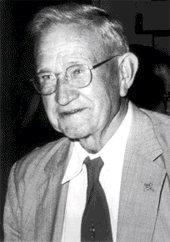
Edward Elmer Smith was an American food engineer and science-fiction author, best known for the Lensman and Skylark series. He is sometimes called the father of space opera.
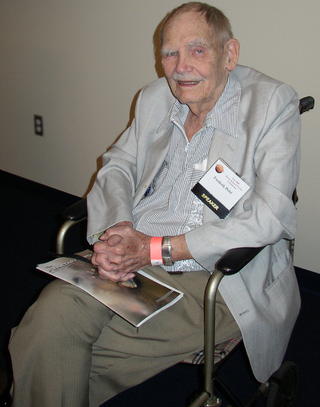
Frederik George Pohl Jr. was an American science-fiction writer, editor, and fan, with a career spanning nearly 75 years—from his first published work, the 1937 poem "Elegy to a Dead Satellite: Luna", to the 2011 novel All the Lives He Led.
The Galactic Empire series is a science fiction sequence of three of Isaac Asimov's earliest novels, and extended by one short story. They are connected by their early place in his published works and chronological placement within his overarching Foundation universe, set around the rise of Asimov's Galactic Empire, between the Robot and Foundation series to which they were linked in Asimov's later novels.
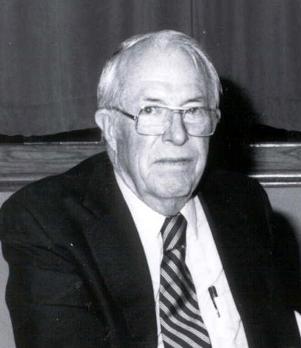
John Stewart Williamson, who wrote as Jack Williamson, was an American science fiction writer, one of several called the "Dean of Science Fiction". He is also credited with one of the first uses of the term genetic engineering. Early in his career he sometimes used the pseudonyms Will Stewart and Nils O. Sonderlund.
This is a bibliography of the books written or edited by Isaac Asimov, arranged alphabetically. Asimov was a prolific author, and he engaged in many collaborations with other authors. This list may not yet be complete. The total number of books listed here is over 500. Asimov died in 1992 at age 72; a small number of his books were published posthumously.

A science fiction magazine is a publication that offers primarily science fiction, either in a hard-copy periodical format or on the Internet. Science fiction magazines traditionally featured speculative fiction in short story, novelette, novella or novel form, a format that continues into the present day. Many also contain editorials, book reviews or articles, and some also include stories in the fantasy and horror genres.

Skylark DuQuesne is a science fiction novel by American writer E. E. Smith, the final novel in his Skylark series. Written as Smith's last novel in 1965 and published shortly before his death, it expands on the characterizations of the earlier novels with some discrepancies. Marc DuQuesne, the major villain of the three previous novels, is shown to have matured, reformed, and been offered a chance at what amounts to a pardon for his prior crimes against the heroes.
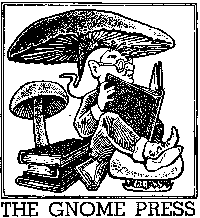
Gnome Press was an American small-press publishing company primarily known for publishing many science fiction classics. Gnome was one of the most eminent of the fan publishers of SF, producing 86 titles in its lifespan — many considered classic works of SF and Fantasy today. Gnome was important in the transitional period between Genre SF as a magazine phenomenon and its arrival in mass-market book publishing, but proved too underfunded to make the leap from fan-based publishing to the professional level. The company existed for just over a decade, ultimately failing due to inability to compete with major publishers who also started to publish science fiction. In its heyday, Gnome published many of the major SF authors, and in some cases, as with Robert E. Howard's Conan series and Isaac Asimov's Foundation series, was responsible for the manner in which their stories were collected into book form.
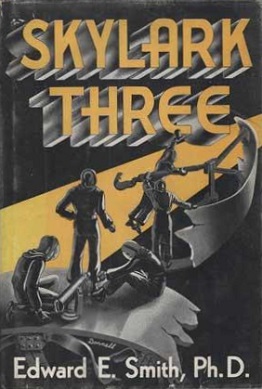
Skylark Three is a science fiction novel by American writer E. E. Smith, the second in his Skylark series. Originally serialized through the Amazing Stories magazine in 1930, it was first collected in book form in 1948 by Fantasy Press.
Galaxy novels, sometimes titled Galaxy Science Fiction Novels, were a series of mostly reprint American science fiction novels published between 1950 and 1961.
Skylark is a science fiction/space opera series by American writer E. E. Smith. In the first book, The Skylark of Space, a scientist discovers/accidentally invents a space-drive, builds a starship, and flies off with three companions to encounter alien civilizations and fight a larger-than-life villain.
Lee Hawkins Garby (1892–1953) was the co-author with Edward Elmer Smith of the 1928 serial novel The Skylark of Space, the first science fiction story in which humans left the solar system. She was the wife of Dr. Carl DeWitt Garby, a friend of Smith's from college at the University of Idaho.

From Other Worlds is an anthology of science fiction stories edited by American writer August Derleth. It was first published by Four Square Books in 1964. The anthology contains seven stories from Derleth's earlier anthology, Beachheads in Space. The stories had originally appeared in the magazines Astounding Stories, Amazing Stories, Startling Stories, Weird Tales and Planet Stories.

Skylark of Valeron is a science fiction novel by the American writer E. E. Smith, the third in his Skylark series. Originally serialized in the magazine Astounding in 1934, it was first collected in book form in 1949 by Fantasy Press.
Michael Joseph Cassutt is an American television producer, screenwriter, and author. His notable TV work includes producing or writing, or both, for The Outer Limits, Eerie, Indiana, Beverly Hills, 90210, and The Twilight Zone. In addition to his work in television, Cassutt has written over thirty short stories, predominately in the genres of science fiction and fantasy. He has also published novels, including the 1986 The Star Country, the 1991 Dragon Season, the 2001 Red Moon and the 2011 Heaven's Shadow, in collaboration with David S. Goyer. In addition, Cassutt contributes non-fiction articles to magazines and is the author of the non-fiction book, The Astronaut Maker, a biography of NASA legend George W. S. Abbey (2018).
In a writing career spanding 53 years (1939–1992), science fiction and popular science author Isaac Asimov (1920–1992) wrote and published 40 novels, 383 short stories, over 280 non-fiction books, and edited about 147 others.

Black Star Rising, published in 1986, is a dystopian science fiction novel by American author Frederik Pohl. It is about a post-nuclear war future in which a conquered United States becomes a Chinese farming colony. The main character is an American who the Chinese send to meet a race of warlike aliens who come to Earth.
This is a complete bibliography of works by the American space opera author E. E. Smith.

Science-fiction and fantasy magazines began to be published in the United States in the 1920s. Stories with science-fiction themes had been appearing for decades in pulp magazines such as Argosy, but there were no magazines that specialized in a single genre until 1915, when Street & Smith, one of the major pulp publishers, brought out Detective Story Magazine. The first magazine to focus solely on fantasy and horror was Weird Tales, which was launched in 1923, and established itself as the leading weird fiction magazine over the next two decades; writers such as H.P. Lovecraft, Clark Ashton Smith and Robert E. Howard became regular contributors. In 1926 Weird Tales was joined by Amazing Stories, published by Hugo Gernsback; Amazing printed only science fiction, and no fantasy. Gernsback included a letter column in Amazing Stories, and this led to the creation of organized science-fiction fandom, as fans contacted each other using the addresses published with the letters. Gernsback wanted the fiction he printed to be scientifically accurate, and educational, as well as entertaining, but found it difficult to obtain stories that met his goals; he printed "The Moon Pool" by Abraham Merritt in 1927, despite it being completely unscientific. Gernsback lost control of Amazing Stories in 1929, but quickly started several new magazines. Wonder Stories, one of Gernsback's titles, was edited by David Lasser, who worked to improve the quality of the fiction he received. Another early competitor was Astounding Stories of Super-Science, which appeared in 1930, edited by Harry Bates, but Bates printed only the most basic adventure stories with minimal scientific content, and little of the material from his era is now remembered.
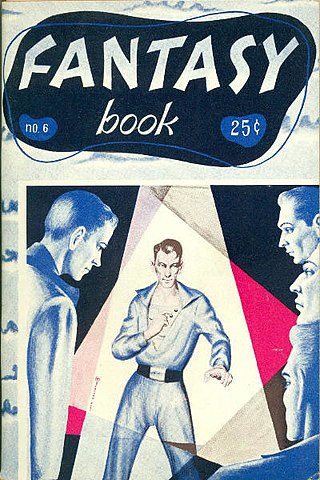
Fantasy Book was a semi-professional American science fiction magazine that published eight issues between 1947 and 1951. The editor was William Crawford, and the publisher was Crawford's Fantasy Publishing Company, Inc. Crawford had problems distributing the magazine, and his budget limited the quality of the paper he could afford and the artwork he was able to buy, but he attracted submissions from some well-known writers, including Isaac Asimov, Frederik Pohl, A. E. van Vogt, Robert Bloch, and L. Ron Hubbard. The best-known story to appear in the magazine was Cordwainer Smith's first sale, "Scanners Live in Vain", which was later included in the first Science Fiction Hall of Fame anthology, and is now regarded as one of Smith's finest works. Jack Gaughan, later an award-winning science fiction artist, made his first professional sale to Fantasy Book, for the cover illustrating Smith's story.













